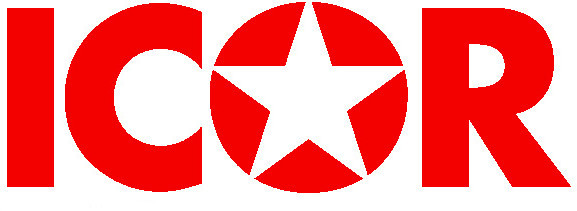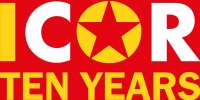Financial Report of the ICOR (Excerpts)
1 – Starting from the 6 principles of the administration of the finances of the ICOR, which were laid down at the Founding Conference in chapter V of the Statute, the International Coordinating Committee was able to develop the structures of the income and expenditures step by step.
2 – The structure of the resources of financing, which is externally independent and built on solidarity among the ICOR members, is based on three main pillars: firstly, the membership fees of each revolutionary party and organization; secondly, the donations and contributions and thirdly, the sale of products of handicrafts or similar things from the various countries of the ICOR members.
3 – Until end of March 2014 membership fees from most of the 45 member parties and organizations of the ICOR were paid. So the total sum of the fees received within the 5 years amounts to more than 22,000 euros, on the average these are about 5000 euros per year.
4 – In comparison to the expenditures, which amounted to more than 135,000 euros in the last 5 years (including the costs of the 1st conference), these are on the average 28,000 euros per year, and so the average contributions per year could only cover 16% of the average expenditures per year.
5 – Therefore the International Coordinating Committee found itself forced to resort to other extraordinary means of financing to fill the gap that exists between the membership contributions and the expenditures. These other means are loans, donation campaigns and the sale of handicrafts.
6 – The biggest part of the loans during the years 2010, 2011 and 2012 was mainly provided by the MLPD, an active member of the ICOR. These loans were paid back step by step through donation campaigns.
7 – The total amount of donations collected during the last 5 years amounts to more than 91,000 euros, that means 18,000 euros per year on the average.
8 – Another form of financing which has proven to be very promising is the marketing of craft products. Even though this opportunity has only been intensified t recently this can become a reliable source of income. The sales revenue of these products during the last five years has resulted in 3,372.52 euros. Further sales revenues have been credited for membership payments of a number of member organizations.
9 – At its meeting on 21 June 2011, the ICC decided on the terms of distribution of membership fees and donations between the ICC and the CCCs. Afterwards they have been distributed according to these regulations in the following way:
50 % of all income go to the central finances, which amounted to more than 55,000 euros
30 % of all income goes to the continental finances, which amounted to more than 29,000 euros for the CCC Europe.
On the other hand, the small amount of 30% of the income of the CCC Asia, America and Africa was compensated by the amount of 20% from the compensation fund, raising the allocation to each CCC to more than 7,000 euros.
In accordance with this decision all CCCs managed their own finances starting with 1 January 2012 and regularly sent reports and receipts to the central Financial Officer of the ICC.
10 – Since 6 October 2010 the expenditures of the ICOR have developed correspondingly to the activities being organized by it and its members, on the central as well as on the continental level.
11 – The increase in expenditures was the material reflection of the manifold activities of our organization worldwide. Three areas of expenditure seem to be essential here: firstly, the expenses of the office administration of the central ICOR office; secondly, the costs for traveling and meetings of the members of the ICC and the ICC secretariat; thirdly, the expenses for the costs of continental meetings. Since 2010 the various expenses have increased annually, in fact as follows: 37,000 in the year 2010; 27,000 in 2011; 23,000 in 2012; 28,000 in 2013; 19,000 in 2014.
12 – Most of the expenses relate to the central account, and one can note that the resources of the central account (55,000 euros) cover only 40 % of the total expenses (135,000 euros); the largest item of expenditure are the costs of the conferences (59,000 euros) and travel expenses (55,000); the deficits are often covered by loans and donation campaigns.
13 – It is proposed to the 2nd ICC, to have at least two persons administer the cash box of the ICOR, because the rapid development of income and expenditures will further increase the responsibility of the elected financial officers. This makes it necessary that agroup of financial accountants is permanently available, who do the daily accounting with scientific methods of bookkeeping.
14 – Today the balance of accounting of the ICC is positive, because after subtracting the costs for the 1st conference (37,000) the balance between total income (107,000 euros) and all expenses of the ICC (98,000 euros) since its election amounts to the positive amount of 9,000 euros.
15 – The financial auditor elected at the 1st conference checked two balances, for the first time in May 2013, for the second time on 1 April 2014. Both balances were positive.
16 – The financial policy of the ICC first had the aim to get rid of the enormous loans during the first two years. Then the ICC improved the structures of income and hereby strengthened its financial independence, which in turn strengthened its political independence. The experience gained enabled the ICC to further rationalize its administration of expenditures and maximally decrease unnecessary expenses.
Document Actions




